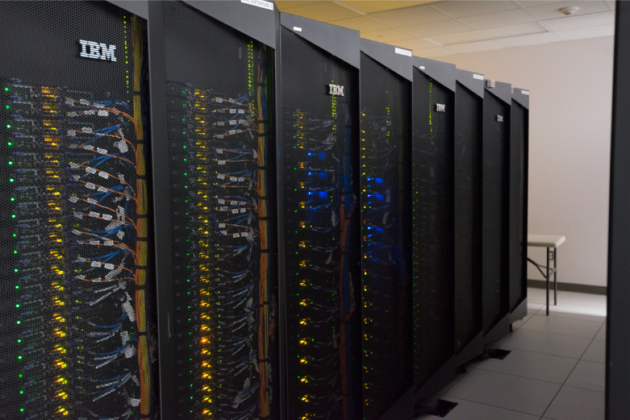They’re University students, doctoral candidates, tenured faculty, and employees. They’re Millennials, Baby Boomers, and Generation X.
And they’re in summer school together, to learn or sharpen basic computing skills at the VISTA Collaboratory, on the lower level of Carlson Library.
“Over time, people have realized that data science and computational science are really important for doing research,” says Brendan Mort, director of the Center for Research Computing (CIRC). “This program gives folks that aren’t necessarily trained in those areas an introductory session. It opens the door to this type of activity so they can see how programming works.”
The third annual CIRC Summer Boot Camp began July 19 and runs through August 25. Two topics are featured each week, with 90-minute classes held Tuesday through Thursday. Sessions are free to University students, staff, and faculty and focus on applications and programming languages ranging from Statistical Analysis Software (SAS), Stata, and MySQL, to Linux, Python, and big data.

“We get as many from the Medical Center as we do the River Campus,” Mort says.
All modules are taught by the CIRC staff. All sessions are at capacity, but there are openings for the upcoming Winter Boot Camp, which runs from late January to early March.
The boot camps offer students, staff, and faculty training in how to write code and run applications that can take advantage of the computing and storage horsepower available at the University.
“Typically, many institutions install these systems and only the capable few have access to them and know how to harness these advanced hardware and software tools for research,” Mort says. “We provide opportunities for everyone in the research community to learn how to use these tools and obtain a better understanding of how they can help with data analytics and processing.”
The classes also focus on “real-world research problems,” Mort says.
“We take a look at actual research data sets and use them as case studies during our classes,” he says. “We are relatively unique in that we offer these opportunities for the research community, a combination of real-world application-based training for novice users and access to high-performance systems where students and faculty can try out their programs and adapt them to their data seats and computational needs.”
Alex Xu ’17 is a biology major from Beijing, China, who recently took an SAS class taught by CIRC assistant director Will DiGrazio. SAS is a software suite that can mine, alter, manage, and retrieve data from a variety of sources and perform statistical analysis on it.
“I took it because statistics is a crucial part of almost all experimental sciences,” Xu says. “The Bluehive platform encouraged me to learn it for the purpose of analyzing my computational population genomic research in a pipeline fashion.”
Bluehive is the University’s advanced, high-performance computer cluster. It consists of many server computers tightly coupled by a high-speed interconnect and is attached to a shared storage pool, aggregated by software, which makes it a fast multi-user supercomputer.
Xu didn’t know much about SAS “other than it’s a popular stats tool.” He said the course offered a good introduction to other options.
“With this basis knowledge, I can try and explore more in the future,” he says.
The VISTA Collaboratory is a 1,000 square foot visualization lab completed in June 2014. VISTA stands for Visualiziation, Innovation, Science, Technology, and Application. The collaboratory consists of 24 displays in a curved 6-by-4 matrix and is equipped with an interactive, tiled-display wall that renders massive data sets in real time, which allows researchers the ability to visualize and analyze complex data instantaneously and collaboratively with colleagues and students.
Mort says the collaboratory stands out as a computational resource because of its size (20 feet by 8 feet), its unified 50-megapixel resolution across a curved display, and its direct optical connectivity to the University’s supercomputing infrastructure.
“What we have here is really something special among universities,” Mort says. “The CIRC classes are a great way to show it off and have an interactive experience. We don’t know anyone in the country that has all the components that make the VISTA what it is.”
Mort says the one prerequisite is that everyone enrolled should be computer literate.
“We expect folks to be able to understand the research problems they’re trying to solve,” he says. “We want them to interact with that data and be involved with it.”
That said, all are welcome.
“It really is for everyone who wants to learn,” Mort says. “And you’re never too old or too young to learn.”




